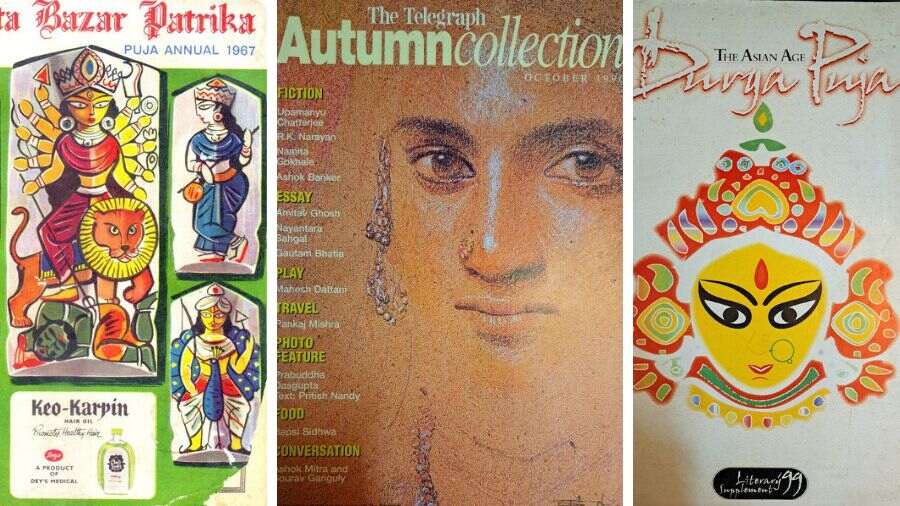To see how a religious festival transforms into a festival of art and culture, one has to really witness the Durga Puja in West Bengal in person.
Of course, a celebration of culture and art has to include literature. Every year, right as autumn approaches, the Bengali litterati awakens its creative vibes and floods the market with innumerable colourful festival publications — novels, short stories, fiction, essays, poems, paintings, plays and more. Apart from regular newspapers, magazines and periodicals, many other publications also come out with an annual festival issue.
Looking back at the literature
This exceptional culture of Bengal dates back to about 1879 when a Bengali weekly named Sulabh Samachar first came up with a Puja-special literary supplement with a dozen extra articles.
However, the credit of publishing the first Pujo sankhya as a separate well-edited magazine goes to Anandabazar Patrika, which did so in 1935. That year, a 284-page tabloid printed as many as 30,000 copies — a huge number in those times. The Bengali Puja editions of Anandabazar Patrika soon became an indispensable part of Durgotsav. It also received appreciation from none other than Rabindranath Tagore in 1939, who, as a reader, expressed his profound satisfaction with the writing.

A festive edition of ‘Amrita Bazar Patrika’ and (right) Tagore’s appreciation for the Bengali Puja editions of ‘Anandabazar Patrika’
This trend of publishing festive editions soon spread to the realm of English newspapers as well and, in 1940, Kolkata-based Amrita Bazar Patrika became the first English daily to publish a Puja-special supplement. In the mid-1940s, the now-defunct The Hindustan Standard, from the house of Anandabazar Patrika also came up with Puja-special literary issues.
Changing patterns
Amrita Bazar Patrika’s annual Puja number dominated the market until the 1960s when The Statesman Festival Number from The Statesman House came up with a very different type of presentation.
Author and book collector, Kaushik Majumdar, is of the opinion that Amrita Bazar’s specials were just a replica of any Bengali sharodiya sankhya.
“If you keep aside the language of the magazine, the entire collection will look like any Bengali magazine’s Puja issue,” he says. Majumdar’s collection has rare editions of the Amrita Bazar special issues from 1966 and 1967 and the contributors of the editions include names like Satyajit Ray, Kamakshi Prasad Chattopadhyay, Bibhutibhushan Mukhopadhyay, Banaphool, with illustrations by noted artists like Reboti Bhushan Ghosh, Saila Chakraborty, and Pratul Mukhopadhyay.
Speaking about the content, Majumdar points out that it is “almost the same and many of these articles are translated from Bengali, while some are originally written in English like one by Satyajit Ray”.
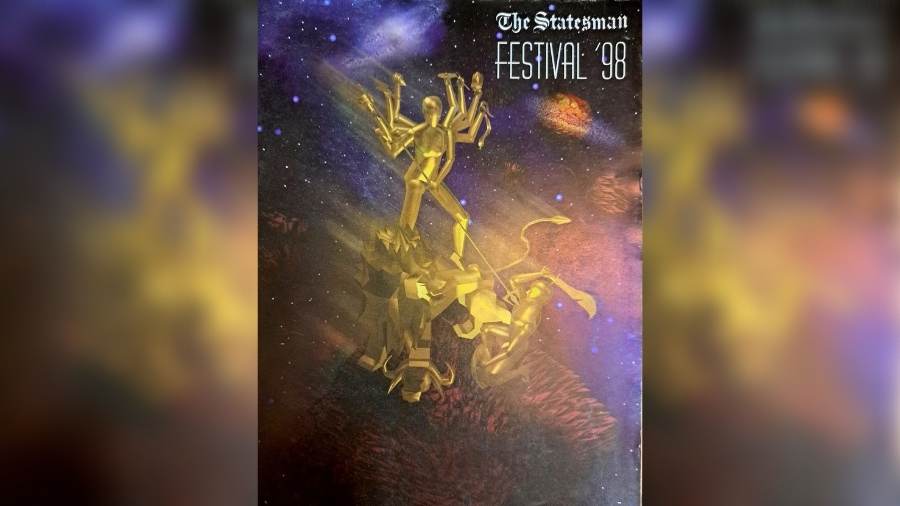
The 1998 festival issue of ‘The Statesman’
The pattern was challenged by The Statesman’s annual festival number that came in the 1960s. The Statesman chose a peerless combination of contributors from Bengal and outside the state, and even invited a couple of foreign authors to write for these issues. The inclusion of talents across India lifted the merit of these issues and they gained immense popularity reaching a peak towards the end of 1990 by when Amrita Bazar’s decline had begun — it finally shut down in 1996.
Between 1996 and 1999, when the world was on the threshold of a new millennium, Kolkata had three mainstream English-language newspapers, and all three used to come up with excellent Puja-special issues.
The Telegraph Autumn Collection
While The Statesman and The Asian Age issues had a commercial exchange price, The Telegraph Autumn Collection, the Puja issue of The Telegraph — a new leader in the market since the mid-1990s — was surprisingly free for its readers just before Durga Puja.
The cover of the 1996 issue carried a superb illustration by Bikash Bhattacharjee. Inside, there were fiction entries by R.K. Narayan (with original illustrations), Upamanyu Chatterjee, Namita Gokhale along with articles by names like Amitav Ghosh and Nayantara Sahgal. And all of these for free just before Puja.
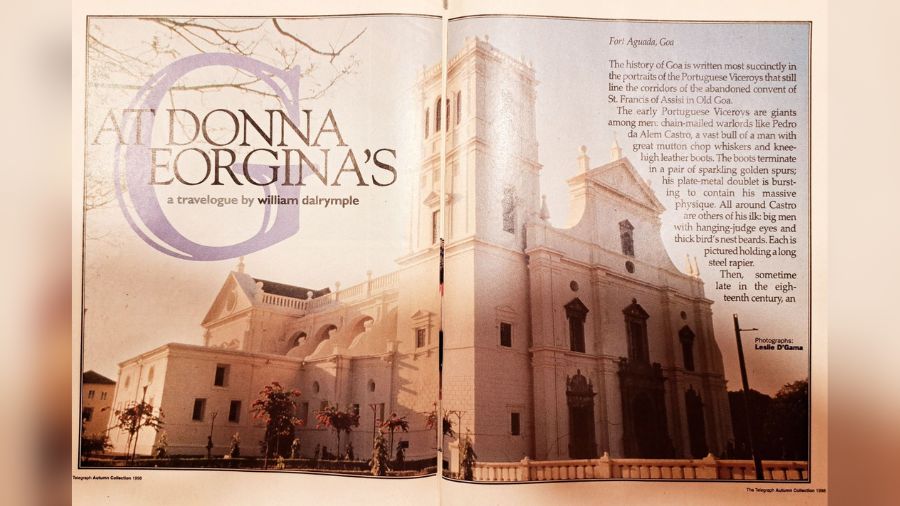
A travelogue by William Dalrymple in ‘The Telegraph Autumn Collection’
The same issue also contained brave nude photography by none other than Prabuddha Dasgupta, with text by Pritish Nandy. There was also a play by Mahesh Dattani, a long conversation on cricket with CPI(M) leader Ashok Mitra and Saurav Ganguly, who was then an emerging youth icon. Artist and illustrator contributors included Ganesh Pyne, Manjit Bawa, Jogen Chowdhury and Ganesh Haloi.
The 1998 issue, which was also given to readers for free, had a travelogue by William Dalrymple along with articles from Kiran Nagarkar and Sunanda Kumar Datta Ray. Also featured were photographs by Raghu Rai, Paresh Maity and Somnath Ghosh, and cartoons by Unni, Sudhir Tailang, Mario Miranda and Maya Kamath.
The Statesman festive edits
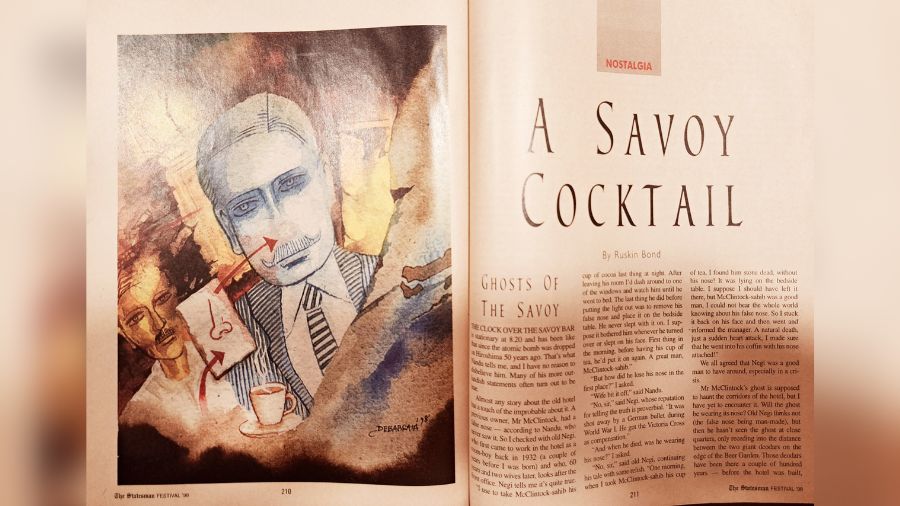
A piece by Ruskin Bond in the festival edition of ‘The Statesman’
Not all reading pleasures were free though. The Statesman’s 270-page festival issue was priced at Rs 40. The very cosmopolitan issues included some of the finest articles on Tagore, Devi Durga, art, politics and more. The 1998 edition had about 13 short fictions, and a plethora of articles. A poem by Shakti Chattopadhay translated from Bengali to English by Supriya Chowdhury also graced the pages along with an original work by US-based Bengali poet Alokranjan Dasgupta.
The issue included a superb article by none other than Ruskin Bond who describes his nightmarish experience of confronting a bear in a pub in the hills. The issue also had a long interview with Sambhu Mitra, the doyen of Indian theatre. With its diverse subjects and richness of content, The Statesman Festival issue of 1998 was a collector’s item even then as it is now.
The Asian Age Durga Puja Literary Supplement
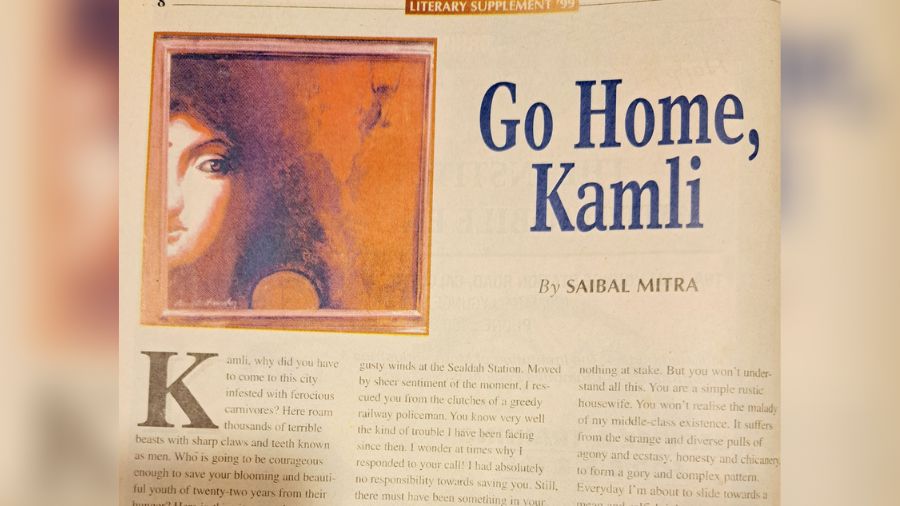
An original work by Saibal Mitra in the ‘Durga Puja Literary Supplement of ‘The Asian Age’
In 1999, The Asian Age launched a Durga Puja Literary Supplement just at Rs 10.
It featured write-ups by Taslima Nasreen, Dibyendu Palit, Sirshendu Mukhopadhyay, Afsar Ahmed, Pratibha Basu and Saibal Mitra, all highly acclaimed writers in Bengal. It had a novella by Narendranath Mitra translated by Dibakar Mitra and a long conversation with Mahasweta Devi. The poetry section featured works by Sunil Gangopadhyay, Joy Goswami, Mallika Sengupta along with P. Lal’s transcreation of a long passage of the Mahabharata’s Drona Vadh Parva.
To be able to read such exemplary work for a mere price of Rs 10 was a privilege for the readers.
With time, the Puja literary supplement in English declined in popularity though some newspapers still publish one every year. However, the reach and acceptance among readers is much smaller compared to the Bengali counterparts, thinks Majumdar, who himself has been reading Puja numbers since childhood.
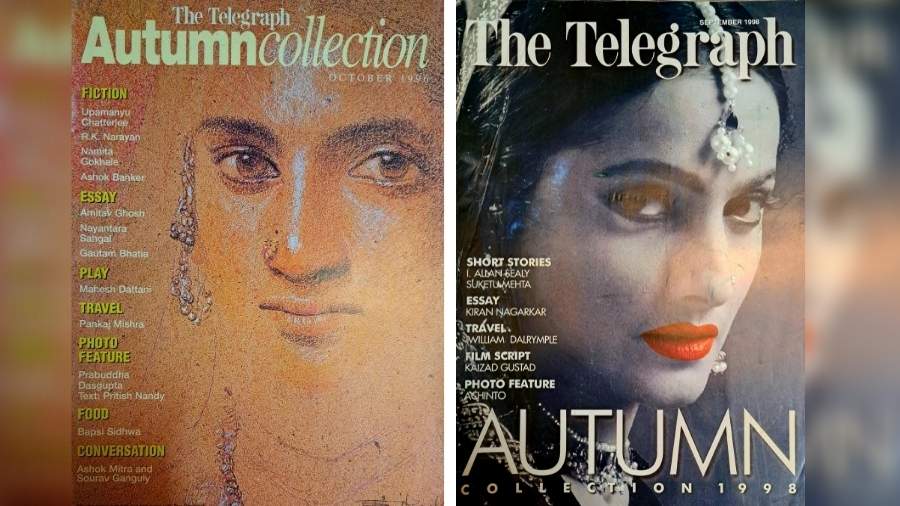
‘The Telegraph Autumn Collection’ — Puja-special editions of ‘The Telegraph’
English Durga Puja special issues are part of Bengal’s Puja heritage now, and it is worth mentioning that apart from literature, the festive issues would also carry articles on fashion, food, fitness, along with quizzes.
A Durgotsav Quiz published in the 1999 literary supplement includes a question that asks readers to “name the Muslim singer who gained huge popularity in Bengal for singing Agomoni gaan in 1914”.


